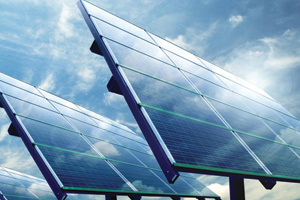
Precise PVD with Mass Flow Meters

 manufacturing of solar cells and photovoltaic arrays have advanced significantly.
Physical vapor deposition (PVD) or sputtering is commonly used for creating the films used to construct photovoltaic panels. Precise gas mass flow rate to the vacuum chamber is critical during the PVD process. Since there is so little pressure drop to work with, PVD processes require flow control devices that are relatively insensitive to the absolute pressure in the chamber.
That's where mass flow controllers and flowmeters come in. Unlike differential pressure devices (dP) like orifice plates, which require a large pressure differential to operate efficiently, mass flow sensors are ideal for the PVD application because of their unmatched precision and reliability.
If you're not using a mass flow meter with your PVD processes, chances are you are not achieving the level of accuracy you need. Consider making the switch!
manufacturing of solar cells and photovoltaic arrays have advanced significantly.
Physical vapor deposition (PVD) or sputtering is commonly used for creating the films used to construct photovoltaic panels. Precise gas mass flow rate to the vacuum chamber is critical during the PVD process. Since there is so little pressure drop to work with, PVD processes require flow control devices that are relatively insensitive to the absolute pressure in the chamber.
That's where mass flow controllers and flowmeters come in. Unlike differential pressure devices (dP) like orifice plates, which require a large pressure differential to operate efficiently, mass flow sensors are ideal for the PVD application because of their unmatched precision and reliability.
If you're not using a mass flow meter with your PVD processes, chances are you are not achieving the level of accuracy you need. Consider making the switch! Go to Autotest Division >
Go to Autotest Division >